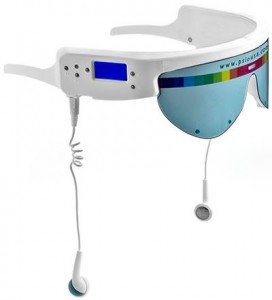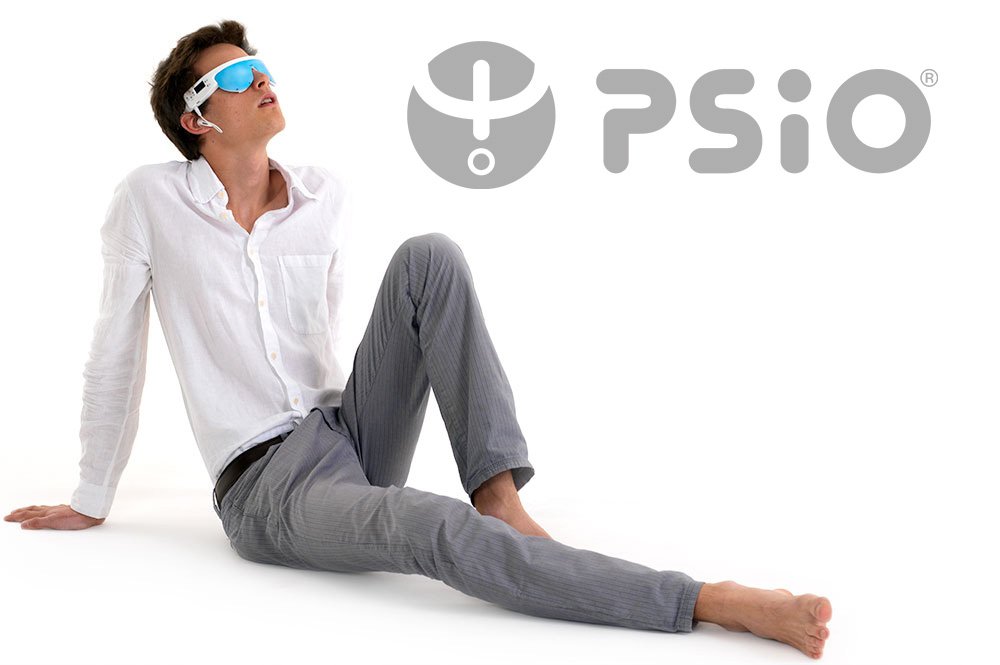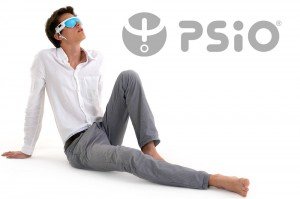Work-related stress costs American business and industry $300 billion a year. That’s the estimated price tag the Occupational Safety and Health Administration (OSHA) has placed on stress, declaring it a hazard of the workplace.
Scientists tell us that stress can be beneficial at times, especially when it alerts us to things that could be harmful. But unrelieved stress can lead to serious damage mentally and physically. Initially, stress can cause an upset stomach, headache, high blood pressure, chest pain, and insomnia. It’s a slippery slope from those ailments to far more dangerous symptoms, especially from stress-related anger which research has shown can be deadly.
What if a specially designed pair of vision-blocking “glasses” with an extraordinary built-in sound system that was pre-programmed for stress reduction could actually clear your mind of all tension? If that seems like a futuristic approach to a health protection system with the added potential for self-improvement, you’d be right. The main difference is that the future has already arrived.
PSiO is the name of audiovisual stimulus glasses that play synchronized sound and light stimulation programs. The programs are on MP3 files and use music and or beats, as well as voice narration for personal development with different applications. PSiO programs are provided in four categories: Balance; Wellness; Performance and Entertainment/Music. Each delivers separate, different beneficial outcomes by taking the user to a common, psychosomatic therapeutic state on the edge of sleep. The end result is a wonderful, relaxing escape that removes mental stress and resulting physical strain.
-more-
 BRAIN STIMULATION FOR STRESS RELIEF
BRAIN STIMULATION FOR STRESS RELIEF
“PSiO was invented to eliminate ‘brain chatter,'” explained Kelsey Butler, Manager of PSiO USA. “For most people, the brain is filled with constantly changing cluttered thoughts – chatter – that is extremely difficult to turn off especially for people who live stressful lives. The PSiO A/V MP3 Color Player helps sweep away all of that clutter in the mind and creates a state of ‘radical rest’ from the steady flow of synchronized sound and light.”
Butler said that the use of visual stimulation with light dates back nearly 2,000 years. The impact of sound and light has been extensively studied and scientifically proven to be effective on the human brain. In fact, for more than a half-century, science has recognized the efficacy of light and sound stimulation on memorization, information management, integration and recovery.
“PSiO really has something for everyone,” said Butler. “There are more than 100 programs that can help just about every member of the family. New audiovisual programs are being researched and developed continuously, as well. So, there will be additional programs in different languages for users from all over the world to choose from. It’s like a constantly expanding library that will help people find the soothing, restorative relaxation everyone needs in today’s stress filled world.”
BACKGROUND:
THE PSiO MP3 COLOR PLAYER
 The PSiO MP3 Color Player is the first truly self-contained, all-in-one audiovisual stimulation device, and is the newest and most technologically advanced AVS unit in the world. Its inventor is the renowned electronics scientist and engineering wizard, Stéphane Dumonceau-Krsmanovic.
The PSiO MP3 Color Player is the first truly self-contained, all-in-one audiovisual stimulation device, and is the newest and most technologically advanced AVS unit in the world. Its inventor is the renowned electronics scientist and engineering wizard, Stéphane Dumonceau-Krsmanovic.
PSiO is an evolutionary product of more than two decades of dedicated research into the impact of synchronized light and sound on the human brain. In fact, the PSiO MP3 Color Player is the culmination of study and experimentation by many scientists for over 1,800 years.
Dumonceau-Krsmanovic began his professional career as a researcher at ULB (Free University of Brussels) and a science associate at ISEPK (Institut Supérieur d’Education Physique et de Kinésithérapie). He earned degrees and is certified in Physiotherapy and Physical Education.
While working on his doctorate in the psychology of Physical Education at the university, Dumonceau-Krsmanovic was intrigued by the intense stress athletes experienced in competition and its impact on performance. He knew that AV Stimulation had the ability to help athletes relax and focus before events. However, when the athletes traveled abroad they didn’t have access to an AVS device.
Dumonceau-Krsmanovic overcame that obstacle by creating a variable frequency AVS device based on his studies of pulsating sound and light. He called it the THETA +1.0 and it was a huge success. He followed that by creating a further advanced electronic anti-stress unit called the Mentalstim 1988.
-more-
BACKGROUND: PSiO MP3 COLOR PLAYER
A version called the Dreamer 1.0 was created for the general public in 1989 and was soon exported to many countries. This technologically superior portable unit used a headset and glasses to generate lights and sounds that induced a deep state of relaxation in just a few minutes. Actually, it worked on three levels of consciousness. Each level held seven sessions that ranged from 15 to 40 minutes.
The next and most advanced generation of the audiovisual stimulation device is the PSiO and PSYCHOMED units. Work on them began in 2006, but the R&D was slow because of the large investment of more than a million Euros required to meet specifications. PSYCHOMED was two years in the making and through the gracious contributions of the Walloon government, the device debuted in 2008.
Meanwhile, R&D continued on PSiO for several years. The first prototype was introduced in 2012 and the first production units were demonstrated at the Consumer Electronics Show in Las Vegas to wide acclaim in 2013.
The PSiO MP3 Color Player is the newest and most technologically advanced audiovisual stimulation (AVS) device ever made. In fact, it is the first truly self-contained, all-in-one AVS unit. It has a built in MP3 player, provides color stimulation with eyes open, and contains more than 100 therapeutic software programs available in four distinct categories. In audiovisual stimulation, the PSiO MP3 Color Player is authentic state-of-the-art and nothing else compares with this amazing, highly portable and effective one-of-a-kind device.
Readers who would like to learn more about PSiO are invited to visit www.psiousa.com.


